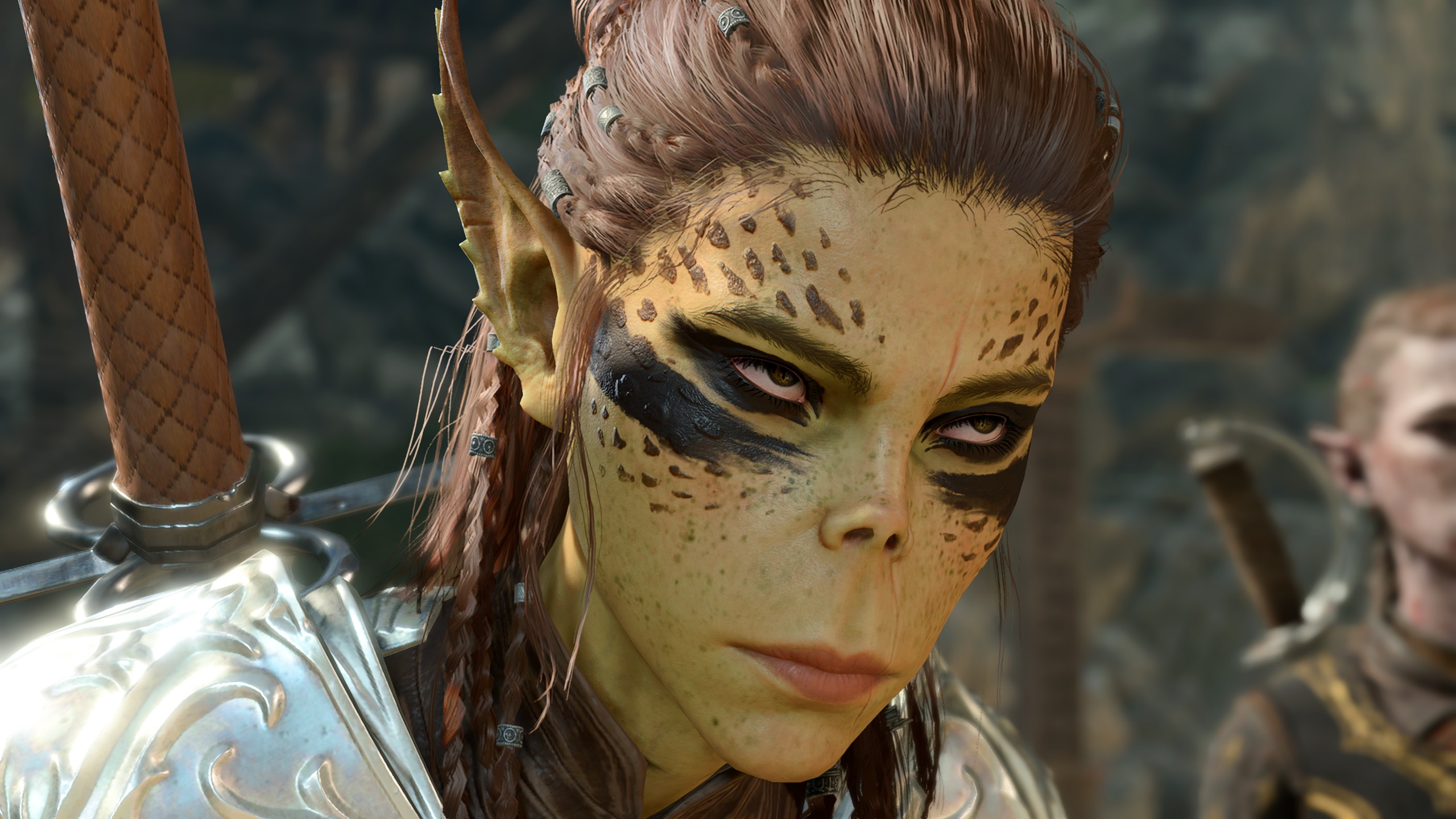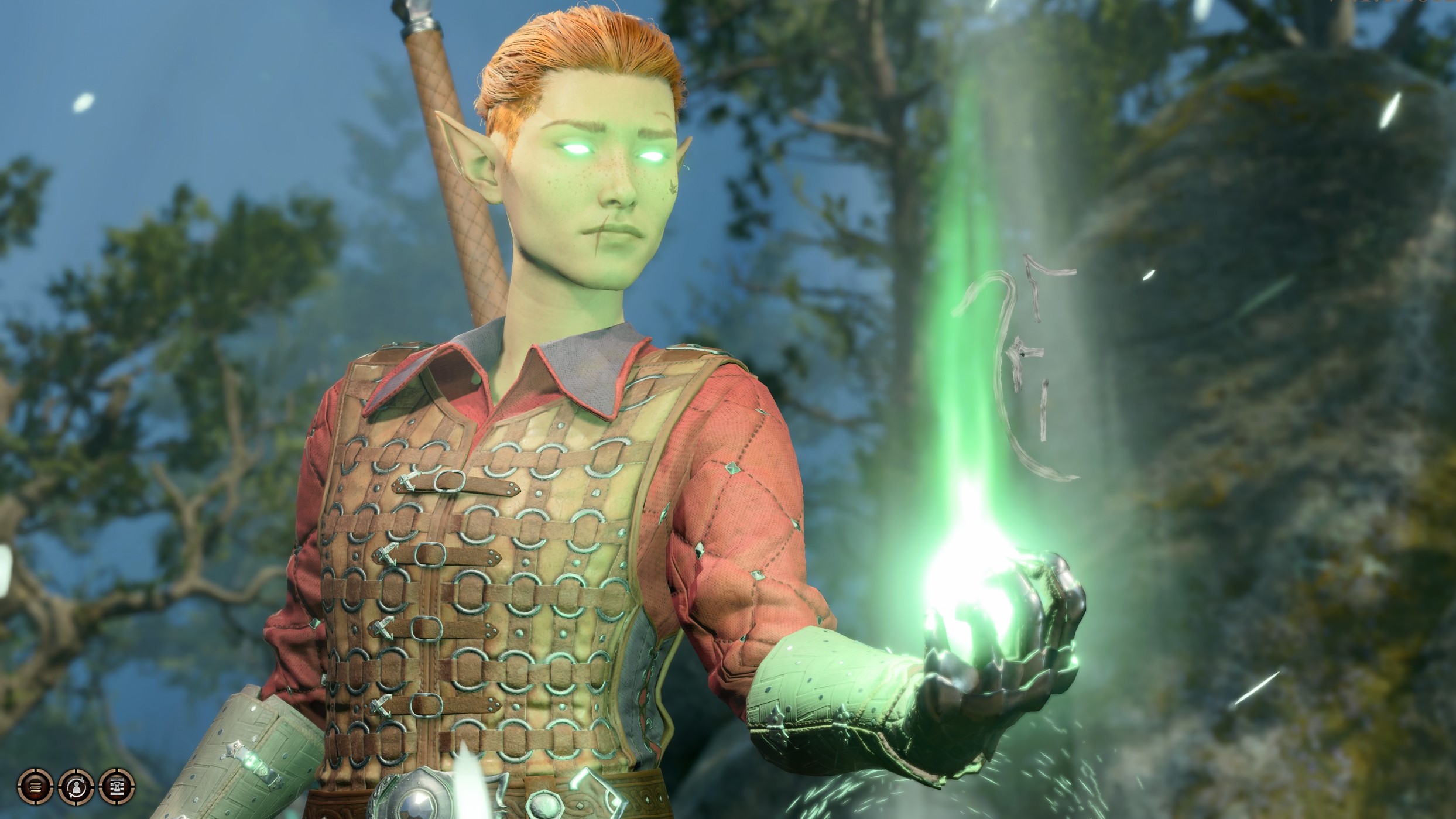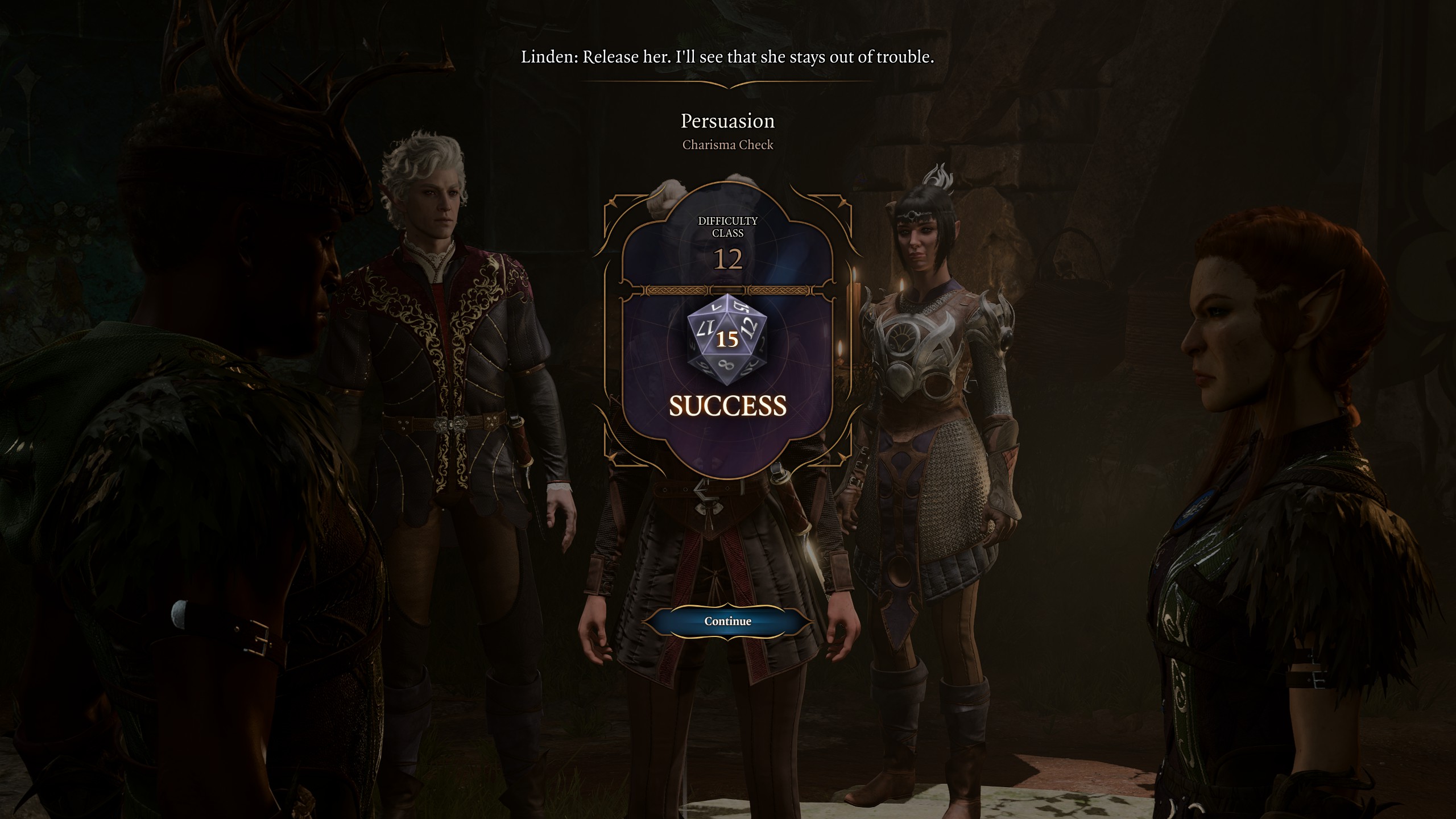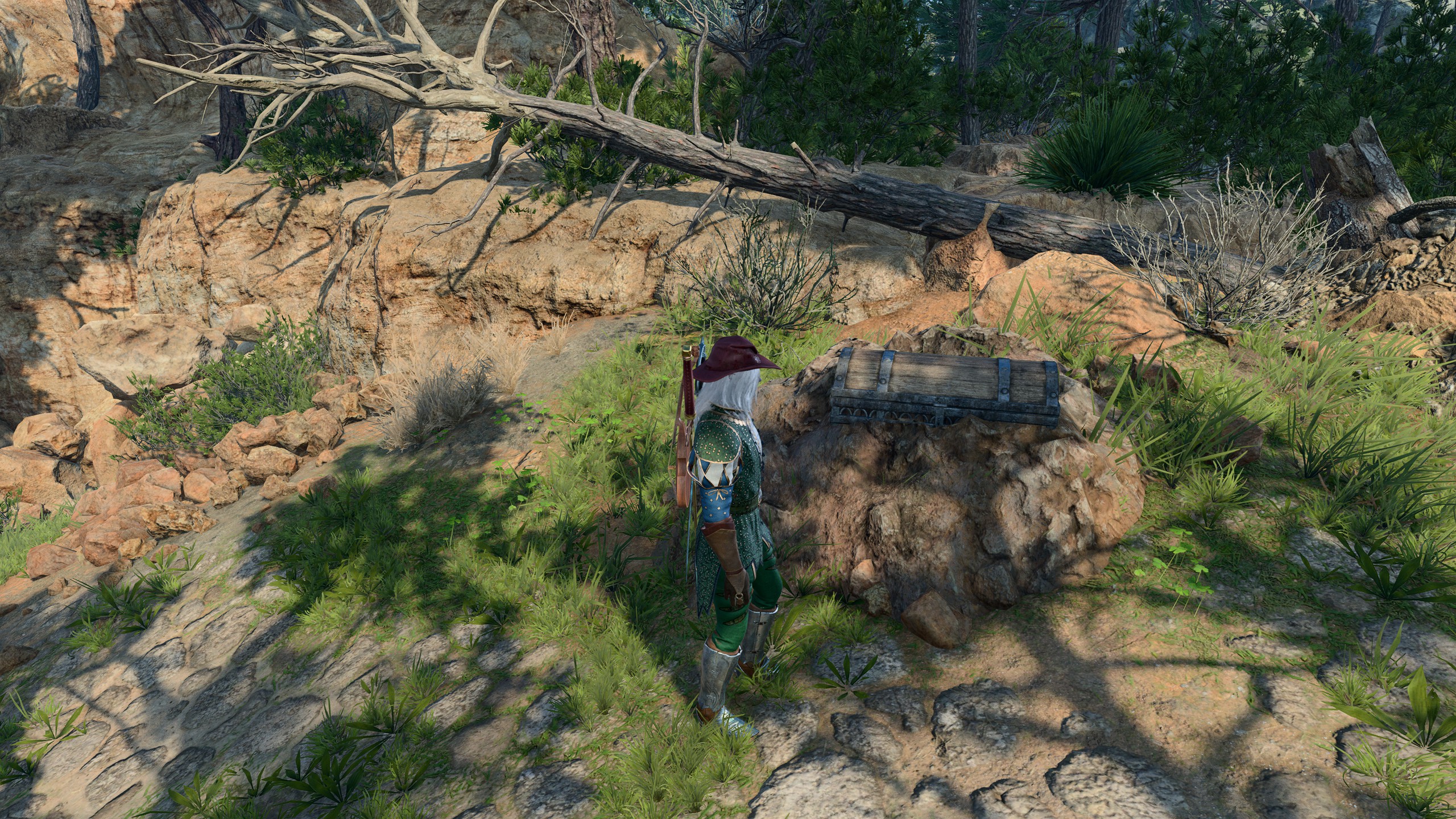Difficulty spikes, failed stealth, and 6 other pitfalls to avoid in your first 10 hours of Baldur's Gate 3
Baldur's Gate 3's beginning hours are especially brutal. Here's what you need to know to survive.

Massive RPGs like Baldur's Gate 3 don't come around too often, so you can understand why we're pretty excited about Larian's latest. It's an intimidating, open-ended game that largely lets you decide how to solve every problem—a rewarding prospect when things are going your way, but Larian's legendary flexibility also makes its systems finicky and unforgiving.

Baldur's Gate 3 guide: Everything you need
Baldur's Gate 3 tips: Be prepared
Baldur's Gate 3 classes: Which to choose
Baldur's Gate 3 multiclass builds: Coolest combos
Baldur's Gate 3 romance: Who to pursue
Baldur's Gate 3 co-op: How multiplayer works
If you've never played a Larian RPG, you might find Baldur's Gate 3's beginning particularly daunting. Pick the wrong pocket, take one step where you shouldn't, or glance at a mean-looking orc the wrong way and you could trigger an unwinnable fight. Some systems aren't fully explained, and it's easy to screw yourself over with a class you don't like or a custom character you're just not feeling.
To help you avoid getting overwhelmed, we've collected guides to the 7 things you should absolutely be aware of in your first 10 hours in Baldur's Gate 3. And once you've got your legs under your, check out our broader list of Baldur's Gate 3 tips for even more advice on this beast of an RPG.
Feeling custom character remorse?
Refer to: How to revive dead companions and recruit Withers
As far as we can tell, there's no way to change your custom character's appearance early on in Baldur's Gate 3 (but we hope to find one later in the game). Once you've chosen your race, build, and background, you're stuck with them for a while, at least. Unless, that is, you bought the Digital Deluxe Edition of the game that includes an item called the Mask of the Shapeshifter. The mask is actually a helmet that you equip to acquire the spell Shapeshift, which lets you temporarily transform into any race and gender, even adopting their unique racial bonuses. It's not the real deal, but it's a somewhat neat workaround.
The one thing that you can change early on without that item is your character class. You do so by recruiting a peculiar NPC to your camp—a wrinkly necromancer named Withers. Once you find him, he'll change your class anytime (for a price).

Why do I suck at combat?
Refer to: Baldur's Gate 3 class guide
The biggest gaming news, reviews and hardware deals
Keep up to date with the most important stories and the best deals, as picked by the PC Gamer team.
Baldur's Gate 3's character creator gives a basic overview of each class, but if you're struggling through every fight early on, our in-depth guide can help explain what each class is best at and how they're typically played.
Keep dying in the goblin camp or Emerald Grove?
Refer to: Should you save or raid the Emerald Grove in Baldur's Gate 3?
Baldur's Gate 3's first big difficulty spike comes after you reach the Emerald Grove, around 2-4 hours into the game. You're presented with a handful of choices that let you side with the grove's inhabitants and take on a nearby goblin camp, or take over the grove for yourself. Our guide linked above explores the consequences of both paths, but either way you're in for a big fight. I can't overemphasize how useful keeping Shadowheart in your party is for your first few levels—taking on a dozen-plus goblins without healing magic is immediately signing up for hard mode, especially since healing potions are hard to come by early on.

What is inspiration, and should I be using it?
Refer to: What you need to know about D&D5E to play Baldur's Gate 3
You should definitely be using inspiration. Inspiration is a reward your party members earn for doing or saying things that align with their characters. When you fail a non-combat roll, you can cash in an inspiration point to reroll it. You can see how many inspiration points your party has in the character screen, and even read about what you did to earn them. You'll be earning these pretty consistently, so don't be too stingy about using them.
Why does sneaking always fail?
Refer to: How to change your party
Stealth in Baldur's Gate 3 achieves the rare feat of being both forgiving and annoyingly fickle. You can enter sneak mode at any time, but there are conditions that'll cause it to immediately fail:
- If a character is looking at you
- If you fail a stealth check when sneaking through someone's vision cone
- If you break stealth by performing a loud/obvious action
Sneaking is a great way to start a fight, because you always have advantage on enemies that aren't aware of you, but trying to slip past large groups is very risky. Main takeaway: Always begin stealth outside of anyone's vision cones, and only try to sneak through someone's vision if you absolutely must (or you're invisible). There's a good chance it'll fail, and if you try it during combat, you've wasted a valuable action point.
What is 'Advantage', and how do I get it?
Refer to: What you need to know about D&D5E to play Baldur's Gate 3
Advantage is a concept in D&D (and by extension, Baldur's Gate 3) that gives characters a bonus on skill checks based on circumstances or special skills. When you roll with advantage, you roll with two D20s instead of one, and whichever rolls the higher number is the one that counts.
In Baldur's Gate 3, advantage is most often granted during combat. Attacking a character while hiding gives you advantage to hit them, and rogues get special sneak attack bonuses whenever they have advantage, too. Baldur's Gate 3 will also sometimes give you advantage on speech, knowledge, or wisdom checks in conversation.

Perception checks happen automatically, so don't sweat it
Refer to: What you need to know about D&D5E to play Baldur's Gate 3
Something that Baldur's Gate 3 doesn't explain in detail is that the game is constantly making checks in the background. The most common automatic check you'll encounter is a perception check, which often determines whether or not an obscured item, secret switch, or hidden cave entrance reveals itself to your party. Each party member will make an individual check, and you basically have to cross your fingers that one of them succeeds.
If all four fail, it wasn't meant to be. Just make sure you're looking closely for what exactly gets revealed upon a successful check—it's often easy to miss.
When should I be saving?
Refer to: How to save in Baldur's Gate 3
Constantly, and with vigor. Baldur's Gate 3 is hard, and there's zero shame in save scumming your way through it. While I believe it's actually pretty fun to live with and work around a bad outcome in Baldur's Gate 3, sometimes the game royally screws you over in ways you couldn't have anticipated. It doesn't autosave very often, so you can and should be slamming that F5 key after most encounters.

Morgan has been writing for PC Gamer since 2018, first as a freelancer and currently as a staff writer. He has also appeared on Polygon, Kotaku, Fanbyte, and PCGamesN. Before freelancing, he spent most of high school and all of college writing at small gaming sites that didn't pay him. He's very happy to have a real job now. Morgan is a beat writer following the latest and greatest shooters and the communities that play them. He also writes general news, reviews, features, the occasional guide, and bad jokes in Slack. Twist his arm, and he'll even write about a boring strategy game. Please don't, though.

